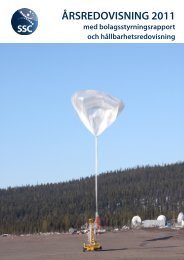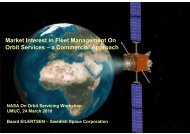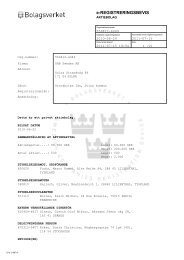Flight 188 - uppsagd
Flight 188 - uppsagd
Flight 188 - uppsagd
Create successful ePaper yourself
Turn your PDF publications into a flip-book with our unique Google optimized e-Paper software.
Data relating to <strong>Flight</strong> <strong>188</strong>The PLANCK missionThe Planck satellite has been designed to analyse andmeasure, with unequalled precision, the very low temperaturevariations, or “anisotropies”, of the of the firstlight which filled the Universe after the Big Bang, namelyCosmic Microwave Background (CMB) radiation. Planckwill cover the whole sky with an angular resolution of 5minutes of arc, improving by a factor of about 15 on theinformation delivered by its predecessor WMAP. With the data collected by Planck, thescientists hope to obtain a better understanding of the origin, evolution and geometryof the Universe, and the nature of black energy and the minute matter density fluctuationsat the origin of the galaxies.1 billion years afterthe Big Bang: thegalaxies300,000 yearsafter the BigBang: CMBemission5.5 billion years after theBig Bang: Earth1 s to 3 mn afterthe Big BangPlanck is taking over from the COBE and WMAP satellites (launched by NASA in 1992and 2003 respectively) and will provide very substantially enhanced measurementprecision.Sky maps as seen by COBE: the first image presentsthe temperature of the sky: we observe theimpact of movement of the Sun (dipole form) andthe Milky Way (weak horizontal smudge).With these two effects eliminated, the seconddiagram presents a wideband associated with theresidual emission of the galaxy, and a backgroundfilled with hot and cold points due largely to mixtureof the CMB with the measurement noiseinduced by the instrument.22















